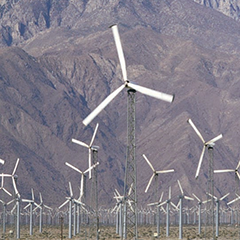As we head deeper into 2014, it’s abundantly clear that the US’s energy mix is now all the stronger thanks to wind. We look at how far the country’s energy market has come in recent years and consider its effects on the environment and the economy.
From the Pacific Coast to the Great Plains to the Atlantic Ocean, wind power is on the rise in the United States, producing an increasing share of the country’s electricity with minimal impact on the environment.
Just a decade ago, wind energy was a trivial part of the nation’s electricity picture. Today, wind energy is one of the fastest growing forms of electricity generation and an increasingly important part of the nation’s energy mix.
The remarkable progress of wind energy is generating real environmental results. Wind energy is reducing demand for electricity from fossil fuels such as coal and natural gas – curbing emissions that cause global warming while minimising the use of water for cooling.
The boom in wind power is no accident, however. State and federal policy-makers have implemented far-sighted public policies that have created the conditions under which wind energy can thrive. By unleashing the energies of innovative companies and American workers, and tapping the natural power of the wind, these public policies are moving the nation toward a clean energy future and delivering growing benefits for our environment and our health.
With the environmental and economic advantages of wind energy becoming ever more apparent, now is the time for our leaders to renew their commitment to the key public policies that will enable the nation to achieve even greater benefits in the years to come.
Burning fossil fuels to generate electricity pollutes our air, contributes to global warming, and consumes vast amounts of water – harming our rivers and lakes and leaving less water for other uses. In contrast, wind energy produces no air pollution, makes no contribution to global warming, and uses no water.





























